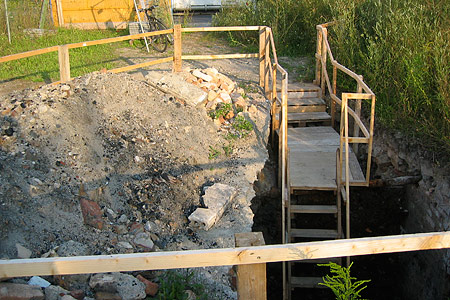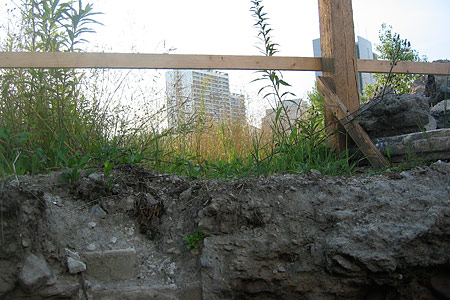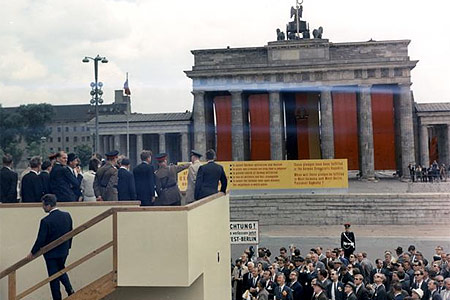Sub-Berlin
Last November I reported on the goings-on at my favourite inner-city prairie on Neue Grünstraße. What I hadn’t realised at the time, was that the actions and interventions here were part of a ongoing art project financed by Bipolar, whose graphic identity I’ve had the pleasure of designing.
On Friday I dropped by the site on my way home from work seeing that a gap in the fence had been left open. What I found was a big hole with a wooden stairwell constructed around and in it. A kind of anti-viewing platform. Three of these constructions have been built, and are the work of Folke Koebberling and Martin Kaltwasser who are two of the artists involved in the Skulpturenpark Berlin_Zentrum project.



The steps lead down into the cellar of a building which stood on the site before WWII. During the Cold War the Berlin Wall ran parallel to the site, and the anti-platform is a sly reference to the platform used by Kennedy in June 1963 to peer over the Wall into East Berlin.

Despite the evening sunlight and the ebbing warmth of the day, it was pretty eerie at the bottom of the steps, knowing I was standing in the remains of a cellar, and dead quiet too. Twisted bits of metal poked out of the earth, as did part of an old toilet bowl.
My mind starts to boggle when I think about all of the burried cellars that must lie just beneath the surface of Berlin. Some days ago my colleague, Renate, and I were looking at an areal photo of the Marx-Engels-Forum. She told me that after the site had been bombed flat during the war, the whole thing was filled with earth and rubble, and turned into a park. The density of pre-war Berlin is hard to imagine these days, but a site of this size might have been home to one hundred plots of land. The next time I cycle through the park I won’t be able to resist thinking about all the rabbits who live there, and have probably dug a vast tunnel network through the submerged cellars of Berlin. Who knows what they find down there.